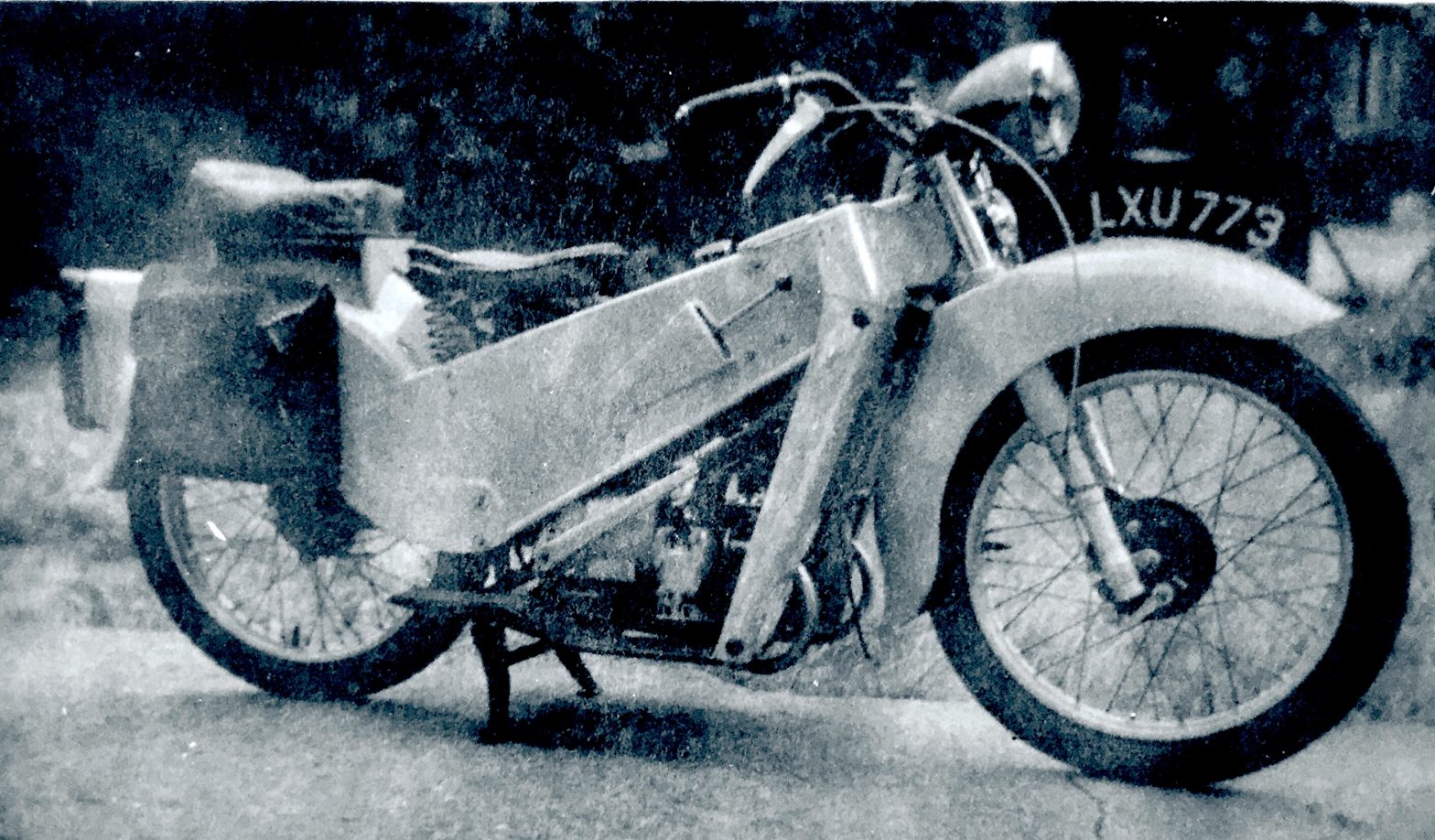The Story of my Velocette LE
I blame my dad. He only ever had one motorbike and that was a Velocette LE that he bought in 1952. He sold it when I was born (at least I presume that’s what happened (the selling, not my birth)), but he would always eulogise about it given half a chance. He always used to say how advanced it was, and actually it certainly was – a 4-stroke horizontally opposed twin, water-cooled, shaft-drive, dry clutch, hand-pull starter, monocoque chassis, full weather protection and designed for very low maintenance. In many ways a two-wheeled car.
Sadly my dad, although in excellent health, died suddenly in 2018. With my relatively new retired status I decided to find out what so attracted my dad to this motorbike. So, I started to look for one that I could work on as a project. It just had to have the caveat that there was a reasonable chance of success, a chance of actually getting it to work, not a box of bits. A period of eBay trolling occurred, plus lots of quick learning about the various LE Velocettes to help me choose the right one.
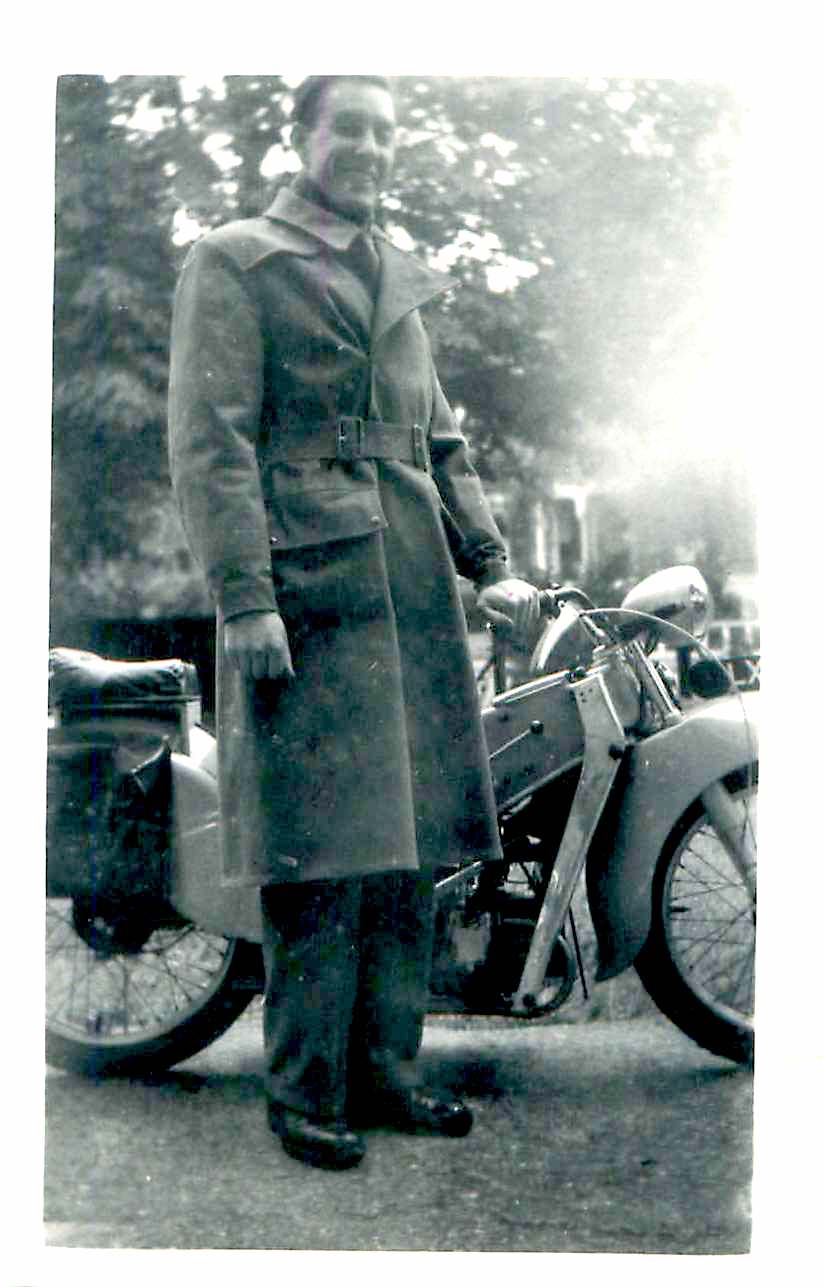
My proud dad with his Velocette LE 200 in 1952
I found a likely MkI LE on eBay, located north of Birmingham, made an offer that was accepted and picked it up in late August, 2019. The owner, Chris, was very helpful and a keen LE owner, having another working one that he rides. He had bought but not actually worked on the LE he was selling, saying that his mechanical and technical knowledge were lacking to do a good job with it. The bike and engine were separate, but both had obviously had already had some work done to them by the previous owner. This may or may not be a good thing, but the overall condition was good and prospects look excellent. So, it was up on to the trailer before the rain hit and then taken 200 miles to its new home with us in Kent.
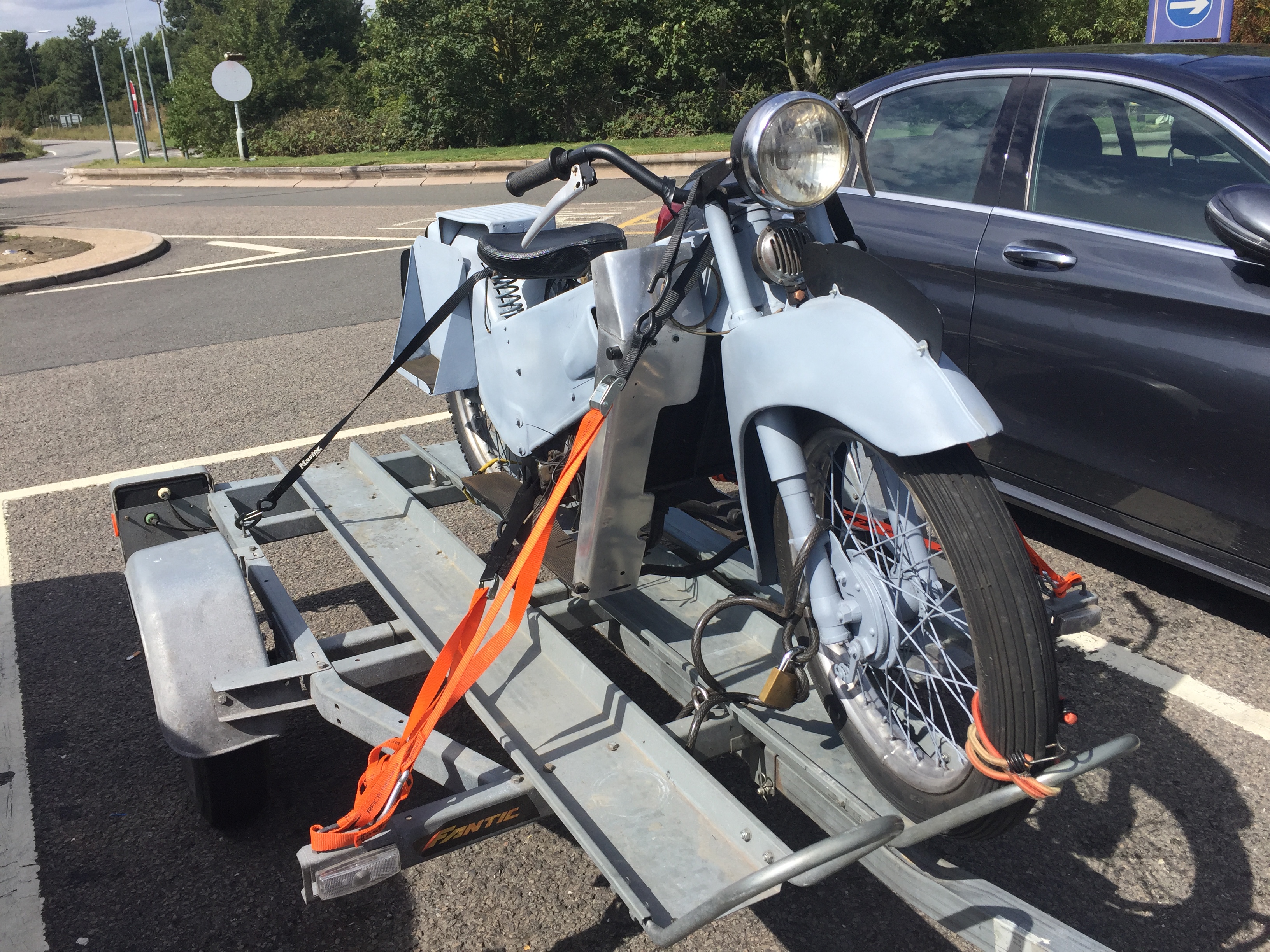
On the way home 🙂
In the end I mistakenly chose the wrong model, but it’ll do (not many will spot the difference anyway) and I really like the one I’ve chosen. My one is a MkI, which is what I thought my Dad’s was, but his was in fact an early MkII – the lack of the usual MkII external oil filter misleading me – the main difference is a 200cc engine (8HP) over the MkI’s 149cc engine (6HP). Never mind, I’m thinking the challenge of a 1950 MkI will make it an even better project. This is my first ‘proper’ restoration job, so I’m looking to get a lot of learning done. My first bike was a 1955 DMW Cortina (225cc Villiers 1H engine) that I used in London as a student, but that was just daily transport with regular repairs, not an actual restoration! That one cost £2.50 (well, £2 10s to be truthful) as a non-runner from a school friend called Duncan Quested. Strange to think that that DMW was less than 20 years old when I was using it round London, but this LE is nearly 70 years old. Maybe I’ll do a DMW page one day…
Sorry, distracted myself there. So, what is the LE like in the cold light of my garage? Basically very good, no serious rust found (the worst being a small bit in the lower part of the left side panel, but seems insignificant) and it rolls ok. No connected brake cables, which made manoeuvring tricky when it wouldn’t stop rolling – nearly an ‘oops’ moment! Suspension is holding it up ok, tyres holding pressure, no obvious leaks from the transmission. Most of the bike is covered in grey primer, and I’m still to find out if it’s hiding anything serious – let’s hope not. The radiator and air filter look new, or more likely just recently re-painted. The centre stand’s interesting – it’s more like a double side stand – works easily and well. The engine looks like its had some work done – looks like new head and base gaskets and generally clean. The crank can be turned using the clutch with difficulty, but I’m putting that down to the gearing between clutch and crank making it harder than normal. But at least it’s not seized with rust. Most of the necessary other bits (speedo, gear change lever, switch, leg shield panels, etc) are there, but no front brake cable, no engine rubber mounts (but are there actually meant to be any on the front of the engine?), no battery, and it’s short on a water hose, but nothing major missing that I’ve spotted yet.
Admittedly, it’s not the prettiest of bikes, but it has a certain charm, even if my wife thinks it’s a bit of a joke bike. We’ll see..
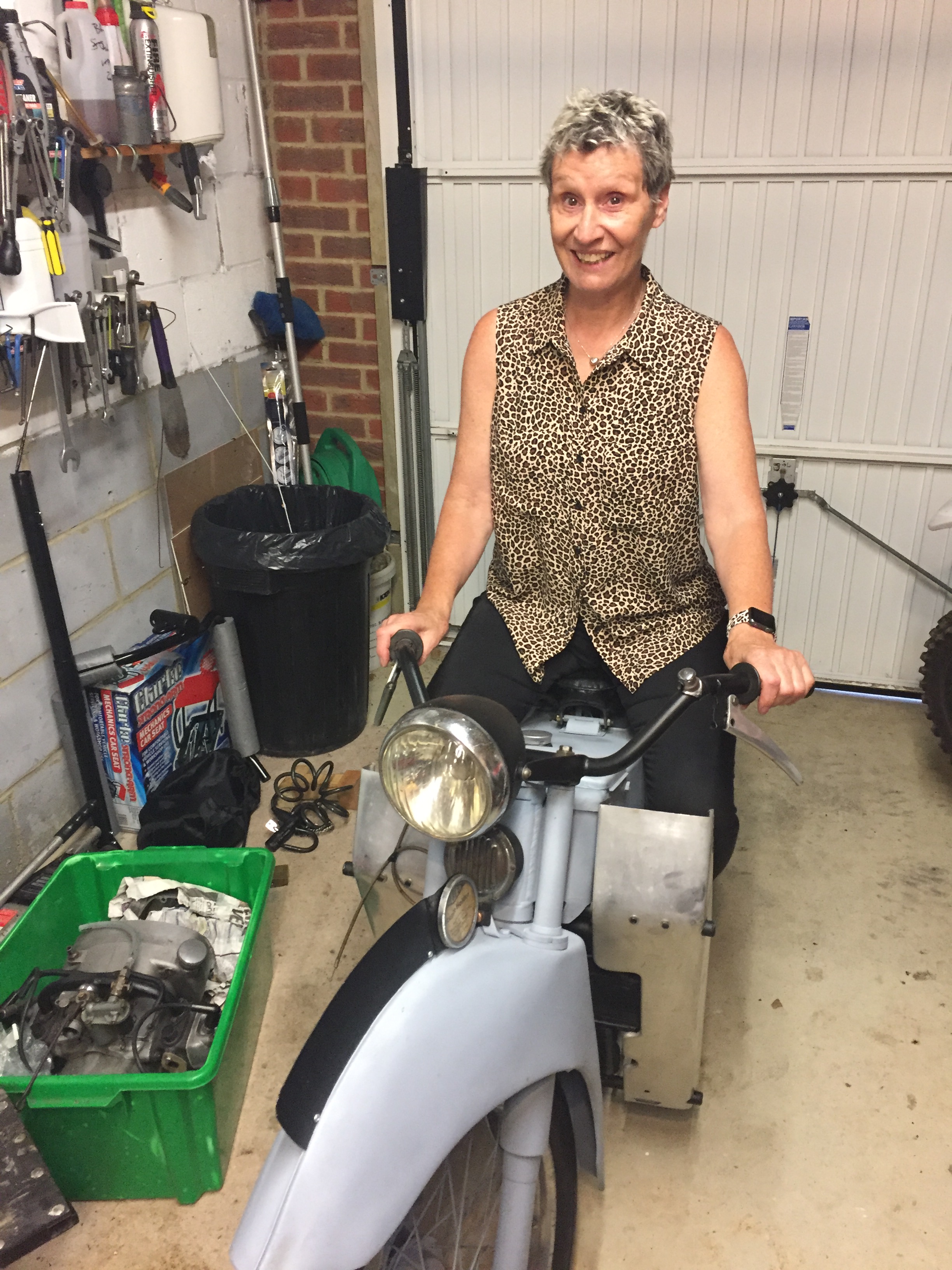
“Is this real?”
However, this could be a problem…
Although there’s an old buff log book, there’s no V5 document and no MoT documents (although it hasn’t needed one for a while), but the worrying bit is that there is no reg number on the bike, no chassis plate with the frame number, and the engine number disagrees with the log book. In other words there’s nothing to actually identify the LE as to it’s ‘proper’ registration. I contacted the registering authority in Darlington, who could only say that an LE with that (supposed) registration number, FET 677, was used initially by the seller Cross Motor Cycle Dealers (location not given, but could have been Ernest Cross Motorcycles on Domine Lane, Rotherham) on 24th March 1950. Oh, well, will probably just have to get an age related number plate…
First things first…
The LE Velocette has the oldest owners club in the UK (not, I don’t think, the oldest owners, although that is possible!), so joining that is almost mandatory, which I’ve done, plus I’ve joined the very active LE Owners Club on-line forum. You’ll find me on the forum as “Ian” – don’t want to complicate matters with a strange name!
Early (perhaps premature) investigations…
Because it was there and easy I had quick peek into the oil filler tube. It showed what looked like a dirty sump. That was a surprise. Why overhaul an engine and leave the sump dirty? I took the sump off and below is what I found. Worrying. What else has been ‘overlooked’? Oh, the joys and tribulations of a project bike.
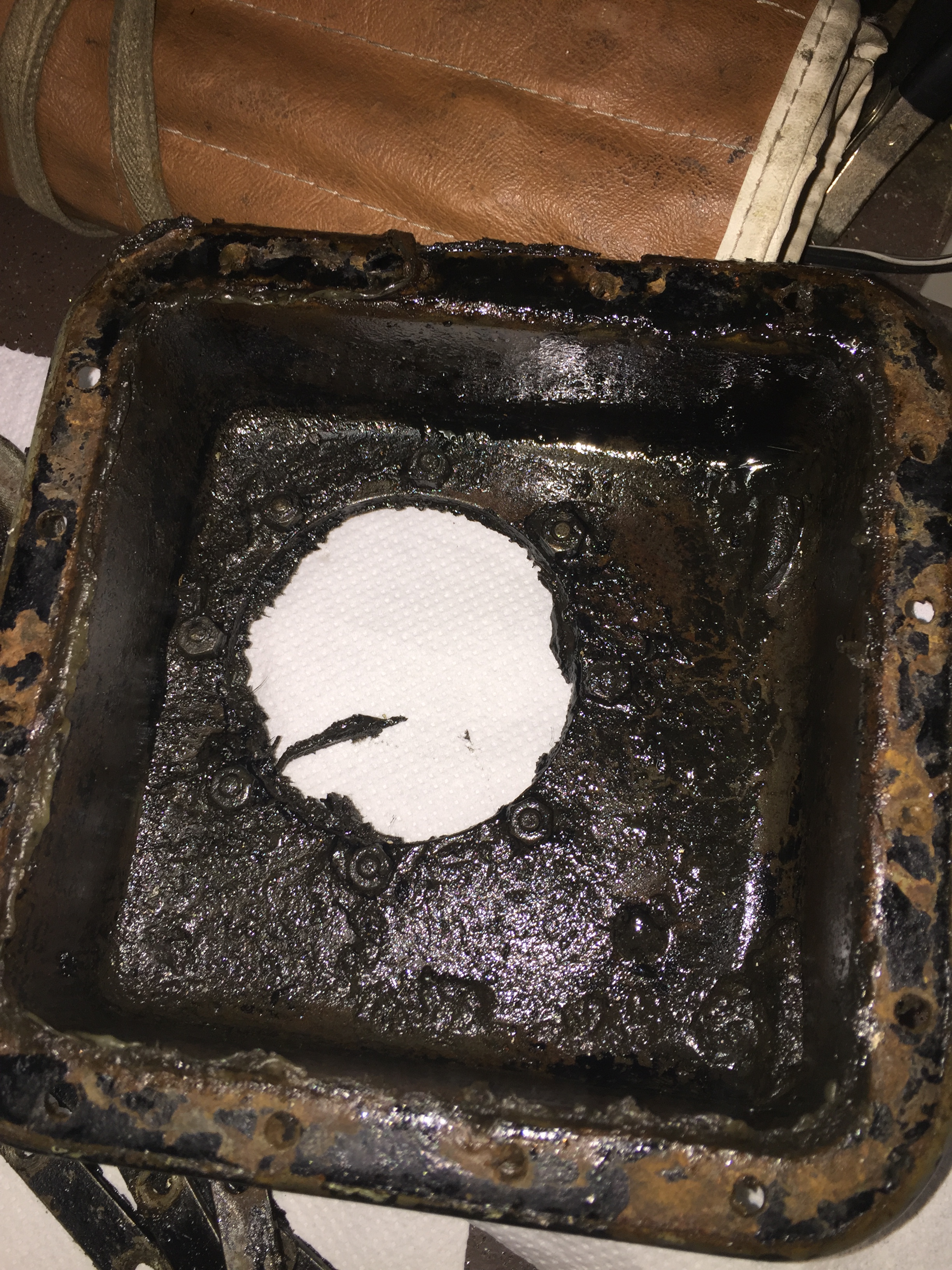
Filthy sump.
Anyway, here’s an overview of the engine as I got it:
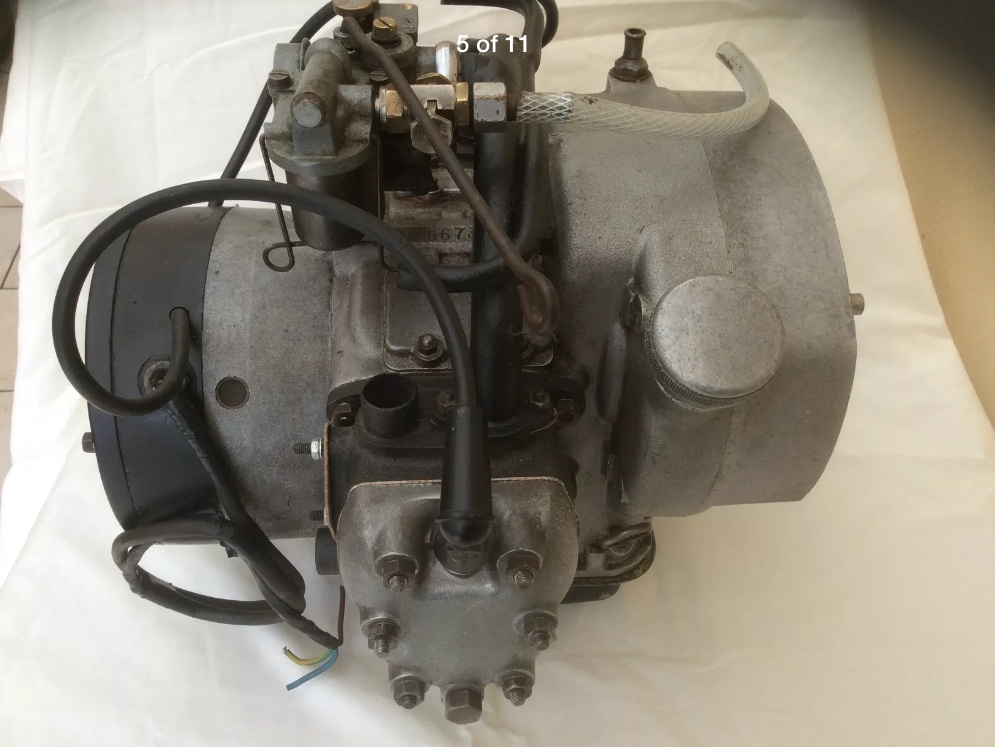
A nice example of the 149cc LE engine.
Of course, the “LE” moniker stands for Little Engine, and it certainly is, isn’t it, both in actual size and capacity? In general, the level of engineering design is excellent, especially for the period in which this was developed, even more especially when you consider that this was less than 5 years after the second world war had ended and things were still being rationed. And this, of course, put the price up. Quite a lot. And probably mostly explains the slow sales before the police force showed interest. Add that together with its unusual appearance – not the sort of thing a ‘real biker’ would buy, it was aimed at a different market, those who wanted a car, but couldn’t afford one – and it was a surprise it survived as long as it did. But it did, thank goodness, a real example of British ingenuity and doggedness.
So, right, now starts the real working part of this project, and I’ll do that as an ongoing blog. I hope you enjoy it. Hold on to your hats……. Next page.
